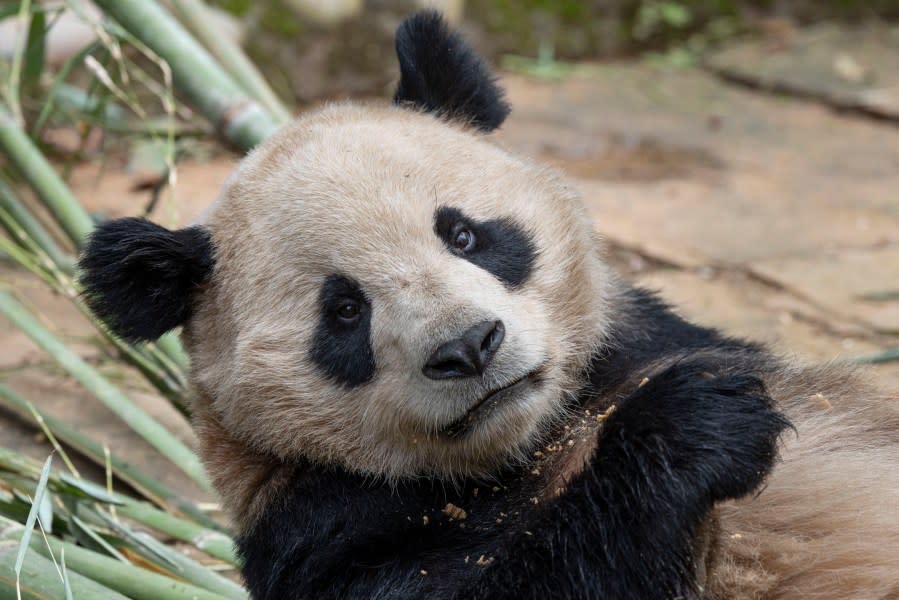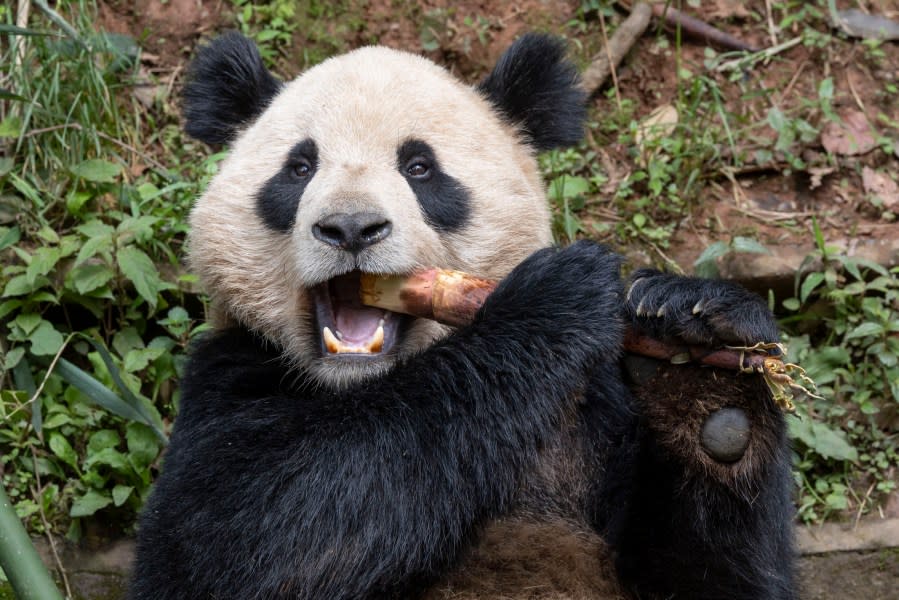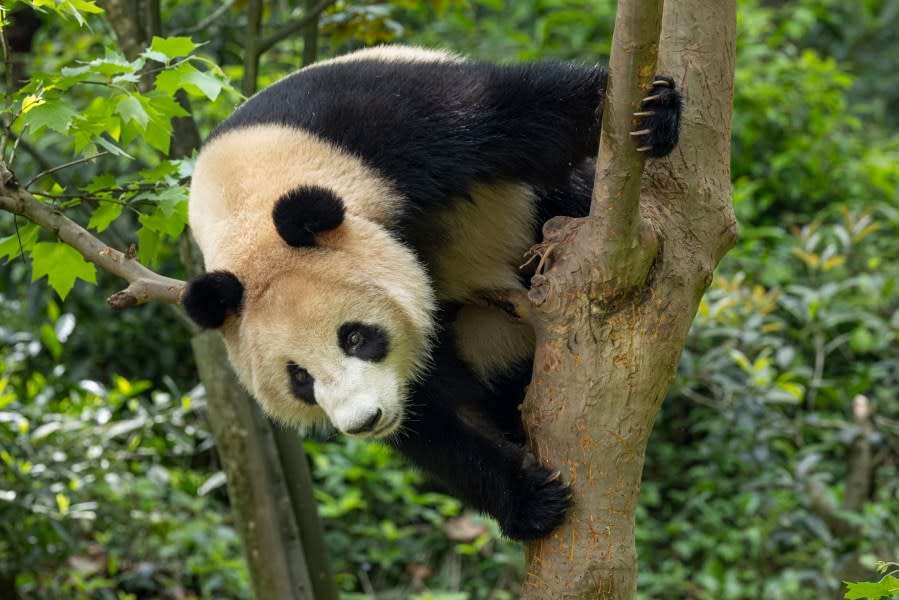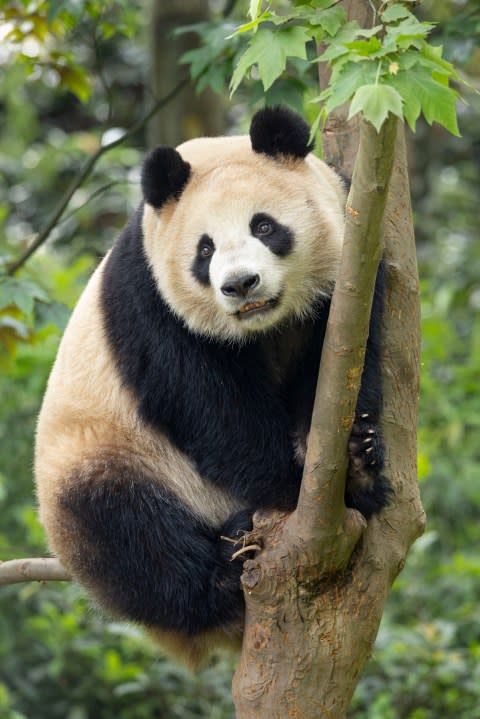Meet the San Diego Zoo’s new pandas
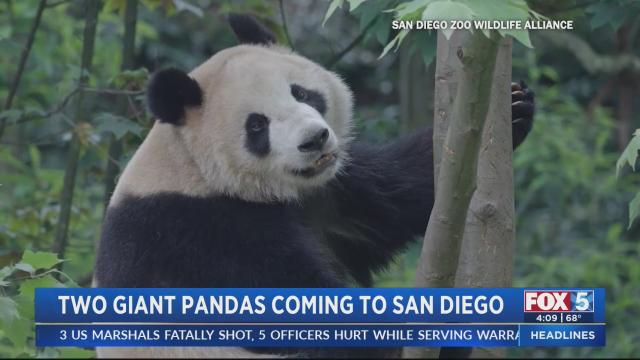
Editor’s Note: This story has been edited to reflect the correct ages of the two pandas. We apologize for the error.
SAN DIEGO (FOX 5/KUSI) — With anticipation building for their expected return, San Diego Zoo Wildlife Alliance leaders took a trip across the Pacific Ocean to visit the two giant pandas who will soon be arriving in San Diego.
Yun Chuan (pronounced yoon chu-an) and Xin Bao (pronounced sing bao) will be one pair of pandas China plans to send to the U.S. this year in its efforts to renew friendship.
Bizarre sea creatures become ‘all-you-can-eat-buffet’ off SoCal coast
“It was an honor to see Yun Chuan and Xin Bao in person and meet our conservation partners caring for them at the Wolong and Bifengxia Panda Bases,” said Dr. Megan Owen, vice president of conservation science at San Diego Zoo Wildlife Alliance.
She and a team of wildlife alliance experts just returned from China to solidify a partnership that will bring the two pandas to the San Diego Zoo later this summer.
The goal of the trip was to ensure both countries’ conservation objectives align, and to exchange knowledge in the effort to continue increasing their population as well as protect and grow their natural habitat – something that has been vital to their survival.
Both Yun Chuan, a four-year-old male, and Xin Bao, a three-year-old female, were born at the Wolong Shenshuping Panda Base in Sichuan.
However, Yun Chuan already has ties to the San Diego Zoo: His mother, Zhen Zhen, was born at the zoo back in 2007. His name is also a nod to his grandmother, Bai Yun, who lived at the San Diego Zoo for 23 years.
Yun Chuan is described as mild-mannered, gentle and lovable. Xin Bao is also described as a gentle, yet witty introvert with a sweet round face and big ears. Her name means “new treasure of prosperity and abundance.”
- Photo of Yun Chuan. (Credit: San Diego Zoo Wildlife Alliance)
- Photo of Yun Chuan. (Credit: San Diego Zoo Wildlife Alliance)
- Photo of Xin Bao. (Credit: San Diego Zoo Wildlife Alliance)
- Photo of Xin Bao. (Credit: San Diego Zoo Wildlife Alliance)
“Our conservation partners in China shared photographs and personality traits of Yun Chuan and Xin Bao, but meeting them in person was so special,” Owen said. “It’s inspiring as people from around the world come together to conserve, protect, and care for these special bears, and we can’t wait to welcome them to San Diego.”
Yun Chuan and Xin Bao are slated to arrive nearly five years after the final black-and-white bear at the San Diego Zoo returned back to China, following the expiration of the loan agreement between the U.S. and Beijing.
The agreement had been in place since 1972, when Beijing gifted a pair of pandas to the National Zoo in Washington, D.C. as a symbol of friendship amidst normalization efforts between the two nations. China later expanded the loans to help breeding and conservation.
In the 30 years pandas spent at the San Diego Zoo, care teams made great strides studying how to protect and recover the giant panda population, as well as the bamboo forests they rely on.
Over the decades and through this collaboration, they have refined techniques for breeding and raising giant pandas, which has resulted in a healthy and sustainable population, going from a survival rate of 5% to 95% under human care.
“Our team here, for example, developed a milk formula that was critically important for the success and survival of neonates that were hand-cared for,” Owen said. “Those kinds of collaborative efforts really supported and increased in the number of giant pandas.”
And that’s the biggest goal–making babies, which is not as easy as one might think.
“It’s not necessarily guaranteed that it’s ‘love at first sight’ so another big part of research we did with the first cooperative agreement was trying to figure out how to get them interested in one another,” Owen explained.
It’s been 19 years since the first YouTube video was filmed at San Diego Zoo
According to Wildlife Alliance officials, this included critical findings on reproductive behavior and physiology, nutritional requirements, habitat needs and genetic research among other areas of focus.
Through these efforts with other conservation groups, the International Union for Conservation of Nature Red List downgraded the giant panda from Endangered to Vulnerable in 2021.
“Our partnership over the decades has served as a powerful example of how, when we work together, we can achieve what was once thought to be impossible,” said Owen. “We have a shared goal of creating a sustainable future for giant pandas.”
Owens is a behavioral ecologist, which means she studies the behavior of animals and how they interact with their environment. Part of her job is to figure out how to make sure there’s a love connection.
“They’re sort of like teenagers in the human context, but we’ll be watching them and when they’re ready, we will be ready to help manage that situation,” she said.
For the latest news, weather, sports, and streaming video, head to FOX 5 San Diego & KUSI News.
